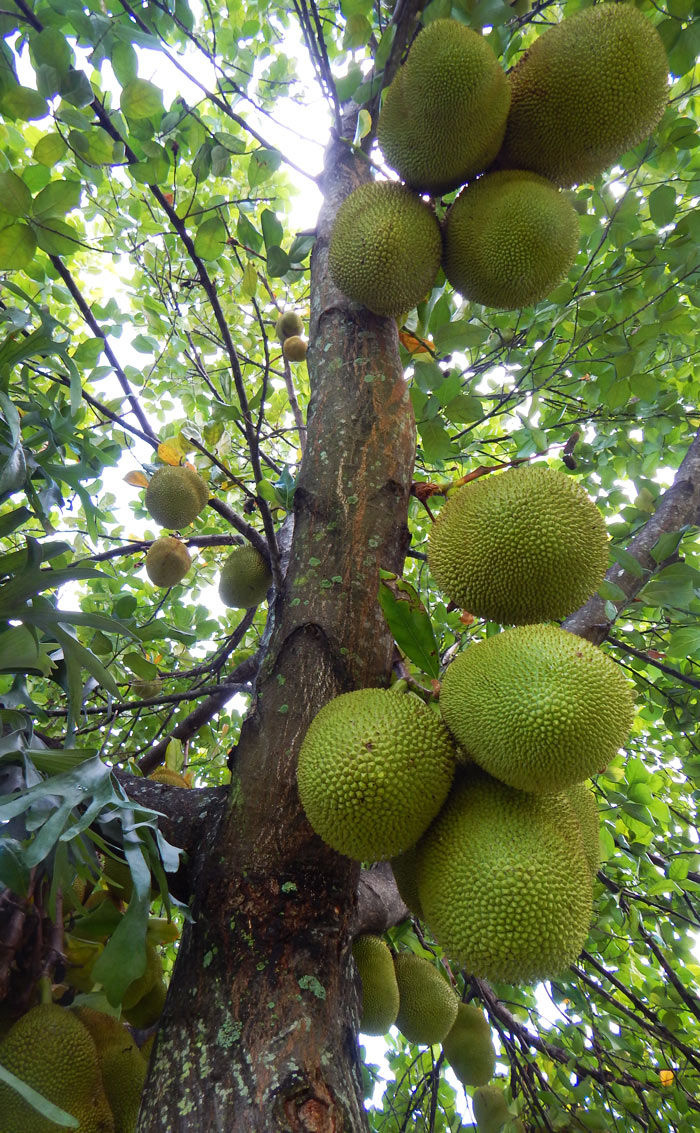
For years I planted almost nothing but annual gardens. As a child and later as a young man, anything other than beans, radishes, lettuce and other crops that produced quickly were usually off my gardening radar.
Fruit and nut trees took FOREVER to produce, or so I told myself. And who wants to wait a few years for a good berry harvest?
Forget that—I’ll plant some sweet corn I can harvest in less than 3 months!
Then I had a change of heart. It wasn’t an overnight change, but it was a change based on a few observations, and the purchase of a home that came with two mature pear trees.
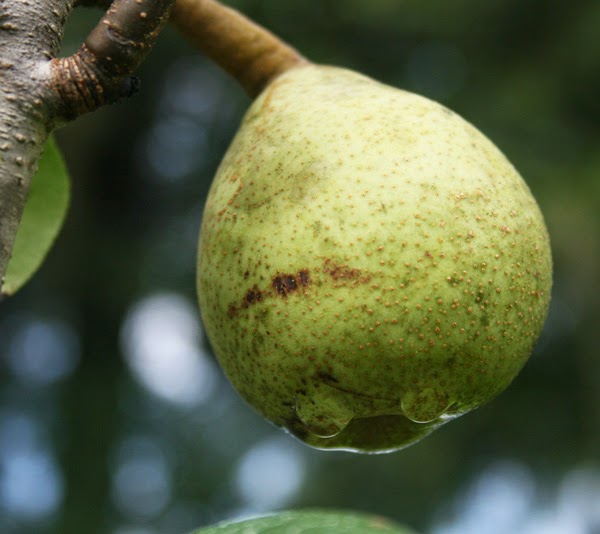
Those pears opened my mind to the incredible possibility of trees.
We harvested baskets of sweet fruit summer after summer and spent almost no time tending the trees.
Pear jam, pear sauce, pear butter, dried pears, pear slices in syrup, pear pie, pear wine, pear salsa… we loved the heck out of those trees and based at least one year’s Christmas gifts on the many delicious confections my wife and I created from the massive harvests of the fall.
Two trees. Hundreds of pounds of food.
I realized the error of my gardening ways. Annual gardens require replanting every spring and fall—trees don’t. Established trees take care of themselves pretty well without much care—annual gardens don’t!
Here’s another story.
Back when I was 15, I lived in South Florida about a mile from my Grandmom and Grandpop’s house. They had a row of coconut palms growing in their backyard along the canal and my Grandpop would pile the fallen coconuts up under the edge of the hedge. I noticed one of them had sprouted, so I brought it home and asked Dad if I could plant it in the backyard. I had been gardening since I was six and already had a little annual garden spot, but I thought it would be cool to plant a coconut and see what happened. Dad gave me a space and I planted it.
Now over twenty years later, that coconut is has grown into a graceful tree loaded with hundreds of pounds of nuts.
Every. Single. Year.
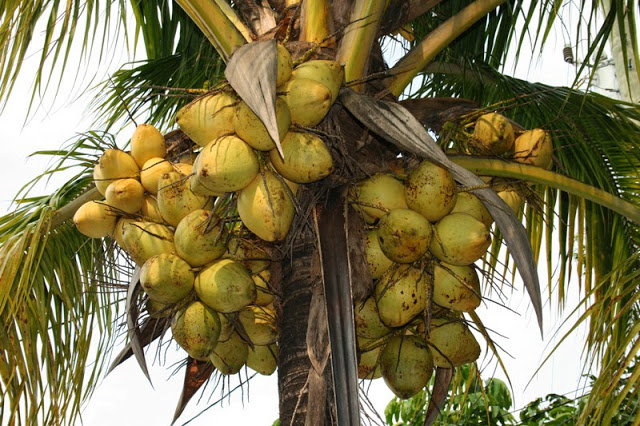
But my old annual garden back there is long gone. What if I had planted a mango back then? A key lime? A jackfruit? Just imagine the yields my parents would be getting now!
Further Proof
If you’re not convinced you should plant trees yet, here’s a third and final story for you.
When we moved to Marion County in North Florida, my wife and I looked at quite a few foreclosures for sale before settling on our current homestead. One old house we visited had broken windows, trash around the yard and some ugly additions… yet in the backyard were two towering grapefruit trees that had covered the weedy ground with fallen fruit. Though it looked as if no one had lived there for years, those trees went on happily producing great big piles of delicious fruit regardless, watered only by rainfall and fed with just what their roots could pull from the sand.
Try walking away from a patch of sweet corn and see how long it keeps producing!
After these experiences, I was completely sold on trees being the way to produce more food with less work and I resolved to plant a few trees every spring and fall when I planted my vegetable gardens.
Since then I’ve planted many hundreds of food-bearing trees. I’ve planted trees in my yard, in the yards of my relatives, on friends’ properties and even empty lots in my neighborhood. After the first few years of getting established, fruit trees leap into growth and will begin to bear fruit… which they bear in greater and greater quantities as they reach maturity.
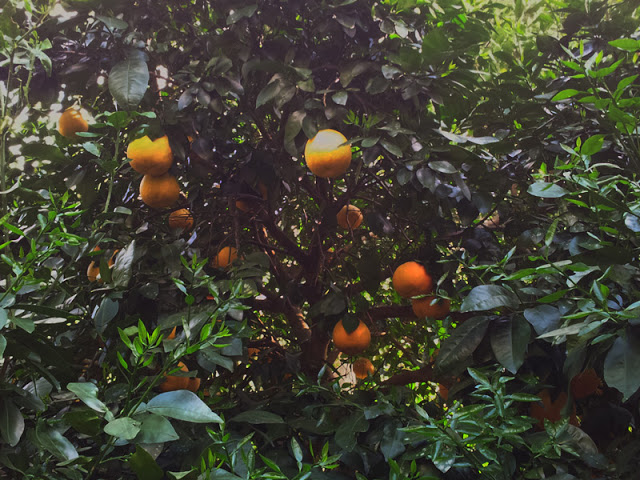
Over the last year I’ve harvested figs, plums, mulberries, peaches, loquats, oranges, Key limes, persimmons, bananas, lemons, guavas, calamondins, jujubes, kumquats from my yard and even some tropical almonds and starfruit from trees I planted in South Florida.
Five years ago, all I had on my property were oaks and a single sweet gum.
In another year or two, in addition to the big list of fruits above, my sand pears, apples, chestnuts, pecans, hazelnuts and avocados will start producing.
You can do the same thing.
As you plant your spring garden, pick out a few fruit trees and pop them into your yard. My top three favorite easy-to-grow fruit trees are mulberries, loquats and Japanese persimmons. After that, add more in fall. Then add a few more. With pruning and a little bit of cleverness, you can grow a lot of fruit trees in even a small yard—and as you get older and are less willing to go dig up a patch of soil for a vegetable garden, you’ll be picking more and more sweet fruit from your own yard with a minimum of effort.
Don’t just plant the quick stuff like I used to do.
Think long-term and you’ll harvest a ton of food with less work than you ever thought possible.
-David The Good
P.S. A good book to start with is Gaia’s Garden by Toby Hemenway. A good follow-up is Creating a Forest Garden by Martin Crawford.

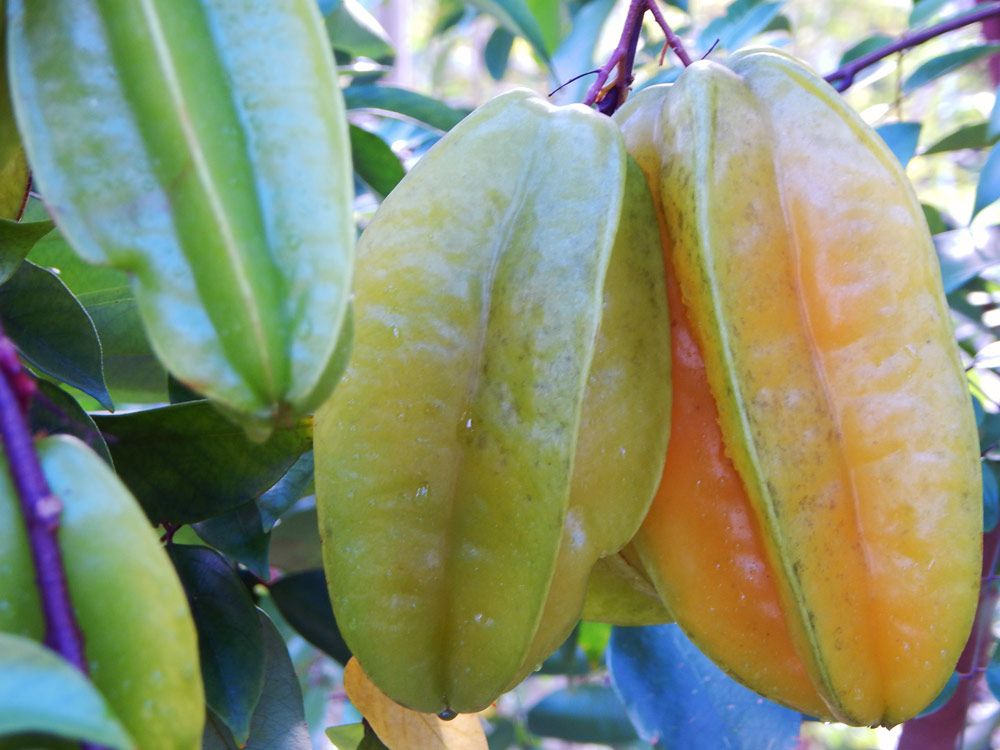
10 comments
Great article, David. In our yard here in Clearwater, a previous owner had planted a choquette avocado 30 years ago (according to our neighbor) and it produces amazingly abundant and delicious harvests every summer and fall. When we first moved in a few years ago I kept seeing them on the ground near the street by our mailbox. I thought someone was just tossing them there, then one day I looked up and saw the avocado tree sticking out way up high between huge oak trees.
There is also a massive longyan tree in the backyard that we have to invite friends over to take some fruit off our hands. When we moved in three years ago I planted 4 mango trees, a tamarind, figs, pomegranates, 3 barbados cherry trees, jamaican cherries, more varieties of avocados, moringa, and miracle fruit. Every year I plant more, and this year we harvested tons of bananas, mulberries, etc. I just keep taking more cuttings from our existing trees and plant more, give away to friends, or plant in empty lots! (especially the mulberries and barbados cherries).
I’m doing way more perennial veggies now too, like okinawa spinach, longevity spinach, egyptian spinach, sw potato, tons of pigeon peas and will try yams this spring after reading your articles.
Keep up the great work!
Mark
“When we first moved in a few years ago I kept seeing them on the ground near the street by our mailbox. I thought someone was just tossing them there, then one day I looked up and saw the avocado tree sticking out way up high between huge oak trees. ”
That is a fantastic story. I discovered a pecan the same way once.
Great work on planting all of those trees. Once you fill in the gaps will all those edible perennial vegetables… man alive… it’ll be paradise. You’ll like yams. They’re awesome to grow and they taste good.
I’m going to have to start youtubing also. I’ve come up with a twist on extracting worm juice from my bins. Basically, I blend up moringa and/or comfrey with water and then pour a few diluted gallons of that liquid goodness on top of my worm bins, let it percolate through, and then gather the juice that comes out the spigot. It’s like worm crap on steroids, lol!! My plants are going nuts with that stuff.
BTW, have you seen this guy’s site? He’s all about organic liquid fertilizers http://theunconventionalfarmer.com/
That sounds like a miracle fertilizer! Tons of nutrition and bacteria! And no – hadn’t seen that guy before. Bookmarked. Thank you.
Great information. I love all the fruit you got. I have been an arborist for years and have planted many trees and had many gardens. Great article. Love your blog.
Thank you, Alex.
looks really good , thank you so much, we gratefully appreciate you , sending blessings from Fruit forests & Forest gardens for healing & health https://www.facebook.com/Fruit-forests-Forest-gardens-for-healing-health-347638495382415/
How can you compare a vegetable garden with a fruit tree? So, yes, you can grow fruit on a tree that takes very little time (I have many fruit trees on my 5 acres). However, trees don’t give me lettuce, onions, kale, cabbage, etc., so I have no choice but to grow these annuals. Yes, I do have things like katuk, cranberry hibiscus, etc., but they aren’t the same as cabbage or tomatoes.
I grow both, but trees are much less work long-term. I wish there was a good cabbage tree!
I have been buying citrus trees without much luck. After a year or so they seem to get diseased.
Comments are closed.